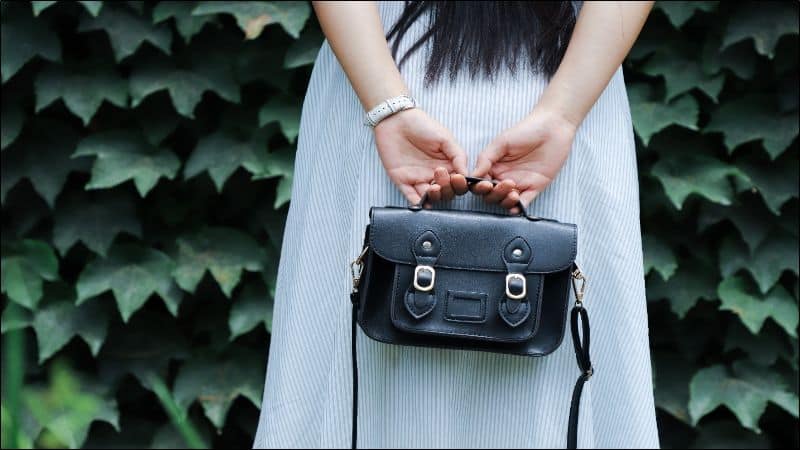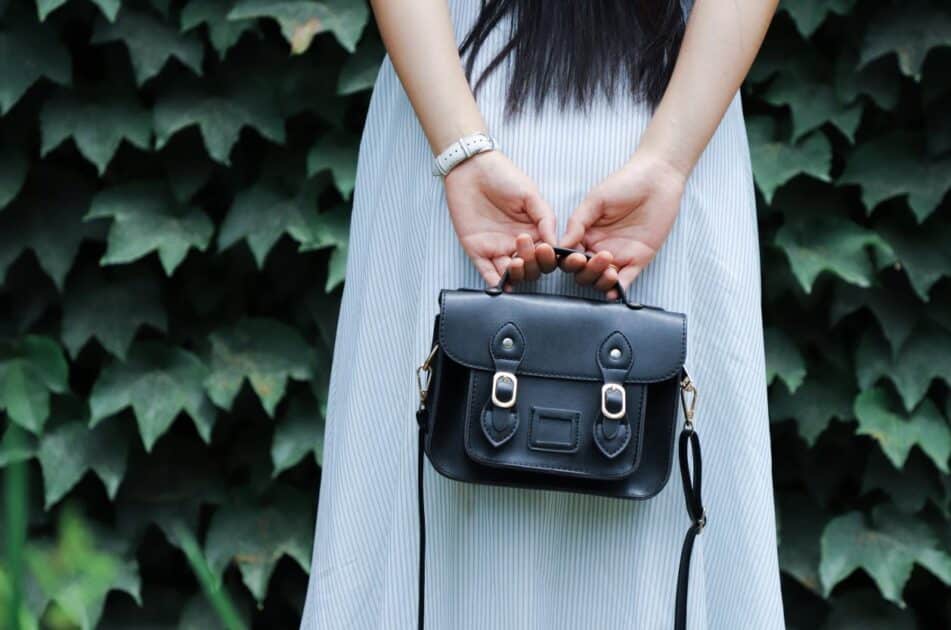Ever found yourself frustrated because your favorite handbag just won’t stay upright? You’re not alone. A slouchy bag can be more than an annoyance; it can lead to a disorganized mess and even damage to your cherished accessory.
Why is a Stand-Up Handbag Important?
Think about the moment you set your handbag down. It slumps over, contents spilling out or becoming jumbled. A stand-up handbag keeps everything in place. It’s not just about organization; it’s about maintaining the shape and integrity of your accessory.
- Protection for your belongings: Keys scratch sunglasses. Lip gloss leaks. A falling handbag is a recipe for costly damage. When it stands up, you minimize risks.
- Easy access: Rummaging through a fallen handbag isn’t just frustrating; it’s time-consuming. With a stand-up design, you spot what you need right away.
- Professional appearance: In a business setting, presentation matters. A handbag that stays upright projects confidence and order.
- Durability: Handbags take a beating. Repeated falls and pressure can wear them down. Standing up can thus extend the life of your treasured tote.
Fashion’s fickle. But as an enthusiast, you’re ahead of the game. Knowing the ins and outs of practicality marries style with function. Take a second to picture your bag standing tall next to you at a café or a business meeting – it’s not just an object, it’s a statement.
Consider as well the variety of stand-up handbags. Structured leather, sturdy frames, reinforced bases – these aren’t mere trends but essential elements. These features can completely transform your handbag experience. They offer a glimpse into a world where you never have to scramble for a lost pen at the bottom of your bag or apologize for a spilled clutch contents.
Investing in a handbag that stands up to the challenges of everyday life – literally and figuratively – is more than a convenience. It’s a reflection of your personal brand, where each detail speaks volumes about your approach to life and style. Stand-up handbags represent not only a practical solution but also a commitment to efficiency and elegance.
Choosing the Right Handbag Material
When you’re on the hunt for a handbag that’ll stand the test of time, material matters. Leather is a go-to for durability and style. It’s resilient and can handle the daily wear and tear, but remember, it might come with a heftier price tag. Faux leather offers a compromise – easier on your wallet while still maintaining that classic look.
For an eco-friendly option, consider canvas. It’s not just for totes; canvas makes for sturdy handbags too. Plus, it’s lightweight and easy to clean. Another sustainable choice is cork. It’s unique, waterproof, and as tough as leather. Remember though, cork can be harder to find and might limit your style choices.
Here’s a tip: when evaluating material, give it a squeeze. Check for:
- Stiffness
- Thickness
- Resilience
These factors contribute to a handbag’s ability to stand upright. Materials that are too soft may fold under the weight of your essentials.
If you’re aiming for a balance of form and function, synthetic fibers like nylon are great. They’re robust, often water-resistant, and can bounce back into shape easily. Synthetic handbags also come in a broad range of colors and designs, giving you more freedom to express your personal style.
Consider the lining as well. A sturdy lining contributes to the overall structure. Look for thick cotton or polyester interiors. They not only add to the bag’s ability to stand but also offer protection for your belongings inside.
Don’t forget the hardware. Metal feet can prevent the bottom from getting scuffed and help in keeping the bag upright when you set it down. Zippers, clasps, and buckles made from quality materials also enhance the structure and lifespan of your handbag.
Choosing the right material is not just about aesthetics; it’s about making a practical choice for a handbag that’ll hold up, stay organized, and continue to stand tall by your side.
Adding Structure with Inserts
When you’re looking to give your handbag a more defined shape, inserts are your ally. Bag inserts or shapers slide into the base and sides, instantly transforming the slouch. It’s remarkable how they can turn a floppy bag into a structured accessory.
Choosing the right insert makes all the difference. Go for materials like acrylic or dense foam for durability and shape retention. You’ll find options tailor-made for popular handbag models or generic versions that can be trimmed to fit.
- Size and Fit: Measure your handbag’s interior dimensions; the insert must be snug but not overstuffed.
- Material: Opt for lightweight yet stiff materials that won’t add excessive weight.
- Flexibility: Firmness is crucial, yet some give is necessary to accommodate your belongings.
When inserting, start by emptying your handbag. Flatten the insert if it’s flexible, slide it in, then let it expand. You’ll notice the difference in posture immediately.
For an upgrade, consider inserts with additional benefits:
- Compartments: Some inserts come with built-in pockets, optimizing your handbag’s organization.
- Color: Match or contrast the color with your handbag’s interior for a personalized touch.
Remember, an insert isn’t just about form—it protects the lining from spills and punctures and can extend the life of your handbag. Your stand-up handbag isn’t just about what’s on the outside. The right insert ensures a blend of outward appeal and inner utility, keeping your essentials in order and your style uncompromised.
Styling Tips to Keep Your Handbag Upright
When you’re on the go, a toppling handbag can be more than just a nuisance—it can disrupt your style and slow you down. To avoid this, keep the heaviest items at the bottom. This will lower the center of gravity of your bag, making it less likely to tip over. Think about placing items like your book, planner, or cosmetics pouch towards the base of your handbag.
« How Much Does a Handbag Weigh? Unlock the Secrets to a Lighter Tote
Benefits of a Handbag: Unlocking Style and Functionality Every Day »
It’s also smart to utilize built-in pockets and compartments. These are designed not only for organization but also for distributing weight evenly. By placing small, heavier items into these compartments, you spread out the density which aids in keeping your bag upright.
Another practical move is to pack your essentials vertically. For instance, slot your wallet, phone, and sunglasses case standing up rather than laying them flat. This method stacks the weight upwards, aligning it with the bag’s natural structure, and often fits more snugly against insert panels.
Consider mixing up your handbag’s contents occasionally. Regularly switching things around can prevent your bag from wearing out unevenly or becoming misshapen in certain areas, which can affect its ability to stand.
Remember, how you care for your handbag when not in use can also affect its posture. Store your bag stuffed and upright on a shelf or in a closet. Use scarves, bubble wrap, or even old clothes to fill the space and maintain the shape of your bag while it’s resting.
Lastly, for those who enjoy a DIY fix, adhesive Velcro strips can be useful. Attach one side of the Velcro to your bag’s base and the other to a chosen surface where you often place your handbag. This will secure the bag’s position and impede sliding or falling.
By applying these styling tips, you can keep your handbag upright and maintain its elegance no matter where you’re headed.
Maintain Your Stand-Up Handbag
Protecting the structure of your stand-up handbag is crucial to its longevity. Daily care is key. Always empty your handbag completely at the end of the day. This might seem like a chore, but it prevents unnecessary stress on the seams and material. Remember that overstuffing can lead to permanent bulges and loss of form.
When it comes to materials, leather handbags need special attention. Address spills and stains immediately with a damp cloth. For canvas or fabric bags, regular spot cleaning maintains appearance without compromising the bag’s rigidity. Use specialized cleaning solutions depending on the material.
Here’s a neat trick: invest in a shaper insert. These products, designed specifically to fit your bag’s dimensions, provide constant support from within. Not only do they help your handbag stand up on its own, but they also protect the interior from accidental spills and sharp objects that might poke through.
If your handbag isn’t in constant use, proper storage is non-negotiable. Avoid hanging it; this could stretch the straps. Instead, keep your handbag in an upright position on a shelf. If you lack shelf space, consider a handbag stand or a custom rack.
For those with a collection of handbags, rotation is beneficial. Different bags for different occasions keep wear and tear evenly distributed. It’s not just about style—it’s about preservation.
Lastly, avoid direct sunlight and humidity. These elements can wear down the bag’s fabric, causing the structure to degrade over time. If you’re stepping out on a sunny day or the forecast hints at rain, opt for a bag that can handle the conditions. Your stand-up handbag isn’t just an accessory—it’s an investment. Care for it accordingly.
Conclusion
You’ve now got the know-how to keep your handbag standing tall and proud. Remember to give it a little TLC by cleaning and emptying it regularly. Use those shaper inserts—they’re your handbag’s best friend for maintaining that crisp shape. And when it comes to storage, think of your handbag like a book on a shelf, upright and in its prime spot. By rotating your collection and keeping them away from harsh elements, you’ll ensure each one stays ready for its turn in the spotlight. Here’s to your handbag looking fabulous and functional for years to come!
Frequently Asked Questions
How can I maintain the structure of my stand-up handbag?
To maintain the structure, empty the handbag daily, use shaper inserts for support, avoid hanging it, and store it upright on a shelf or a handbag stand.
What should I do to ensure the longevity of my leather handbag?
For leather handbags, address spills and stains immediately, avoid overloading to prevent stress on seams, and use conditioners designed for leather care.
Is it okay to hang my handbag for storage?
No, it is not recommended to hang handbags as it can strain the handles. It’s better to store them upright on a shelf or use a handbag stand.
How do I clean my canvas or fabric handbag?
Regularly spot clean canvas or fabric handbags with a suitable cleaner and follow the manufacturer’s care instructions for the best results.
What precautions should be taken to protect handbags from damage?
Rotate the use of handbags regularly, protect them from direct sunlight and humidity, and use shaper inserts to maintain their shape and protect the interior.











